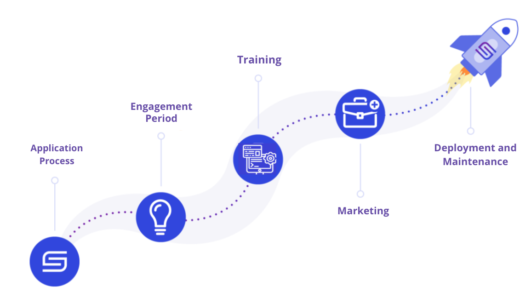
To code or not to code – that is the question. Smoothstack reviews show that Low Code solutions have been around for more than a decade as Rapid Application Development (RAD) tools, but now we are in a new era. There are many Low Code options to choose from; Appian, Salesforce, Microsoft Dynamics, ServiceNow, Boomi, Caspio, Outsystems, Quickbase, and VisionX are just a few of the Low Code options.
No Code is the direction that many applications are going. Microsoft Dynamics is a popular Low Code tool that is moving towards No Code. The difference being Low Code still often requires custom plugins, scripting, or JavaScript, whereas No Code is configuration only. It is a tall order to fulfill when you think about the logic that goes into some programs. Most vendors will tell you that the trick is not trying to get these new tools to do what traditional programming does but figuring out how functions can be done within the new programming framework.
Slow Adoption
Not everyone is embracing Low Code solutions. A recent digital government survey found that only 21% of government execs are currently using Low Code development. Everyone likes what they are familiar with. That is why you still have ASP and Access applications throughout many government agencies, years after they should have been replaced. Many organizations still have one guy who does Cobol CICS. Low Code platforms aren’t the answer to every problem, but they can significantly reduce the cost of development and maintenance of many business applications. This can reduce the need for both in-house expertise and the labor to develop new applications. State and local governments could move much faster and potentially reduce costs by moving to Low Code applications. Think about that the next time you are handed a paper form at a government office.
Now Is the Time
One of the unexpected impacts of Covid19 was the significant reduction of paper forms. Many government agencies have made the jump to Low Code just to continue to service their clients. Some applications have been rolled out in months rather than years. One Federal Agency rolled out the Low Code Interagency Resource Ordering Capability (IROC) to manage wildfire response resources in real-time. Previously, it required manually entering data into 26 different systems.
Smoothstack Reviews show Low Code can be a cost-effective alternative to custom development for a lot of applications. Most organizations can’t transition all their applications to Low Code, and it’s probably not a viable strategy anyway. Low Code can help you make the most of your existing data and infrastructure, but it’s perhaps not a replacement. Think of it as a new tool for your toolbox.
Taking the Plunge
According to the Economic Times, over 500 million applications will be developed in the next five years. This is more than all the applications developed in the last several decades. For programmers that think Low Code is going to eliminate their jobs, the opposite is probably true. Programmers are going to focus more on APIs and integration with legacy applications. Low Code development is likely to be split between traditional programmers and business staff in the future. There is still a fair amount of programming knowledge needed for many applications, but the trend is towards configuration only.
For organizations looking to take the Low Code plunge, bringing in a Low Code development team can be an alternative to retraining everyone. This helps create the logical structure for the IT organization of the future. Low Code becomes the access layer to all the legacy applications that an organization already has. This preserves the IT investment that companies have already made, and it extends access to customers and staff that did not exist before. Traditional programmers work with Low Code developers to create optimum solutions. Smoothstack would love to build your Low Code talent team for you. From start to finish, we will create an entire team to meet your Low Code needs. They can be remote or on-premises, depending on your needs. Reach out to find out more. #buildyourownworkforce #codeforexcellence



